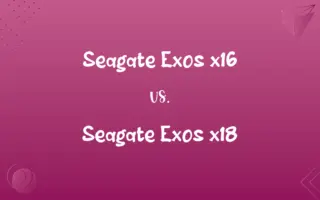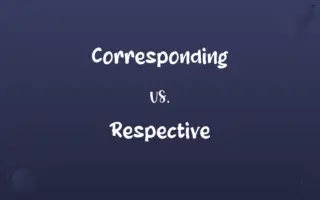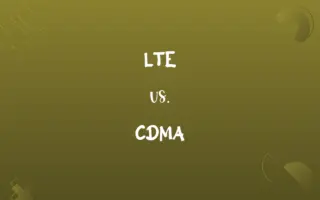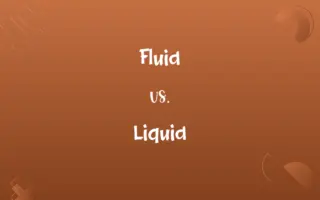Point Elasticity vs. Arc Elasticity: Know the Difference

By Shumaila Saeed || Published on January 23, 2024
Point Elasticity measures responsiveness at a specific point on a demand curve, while Arc Elasticity calculates it over a range of points.
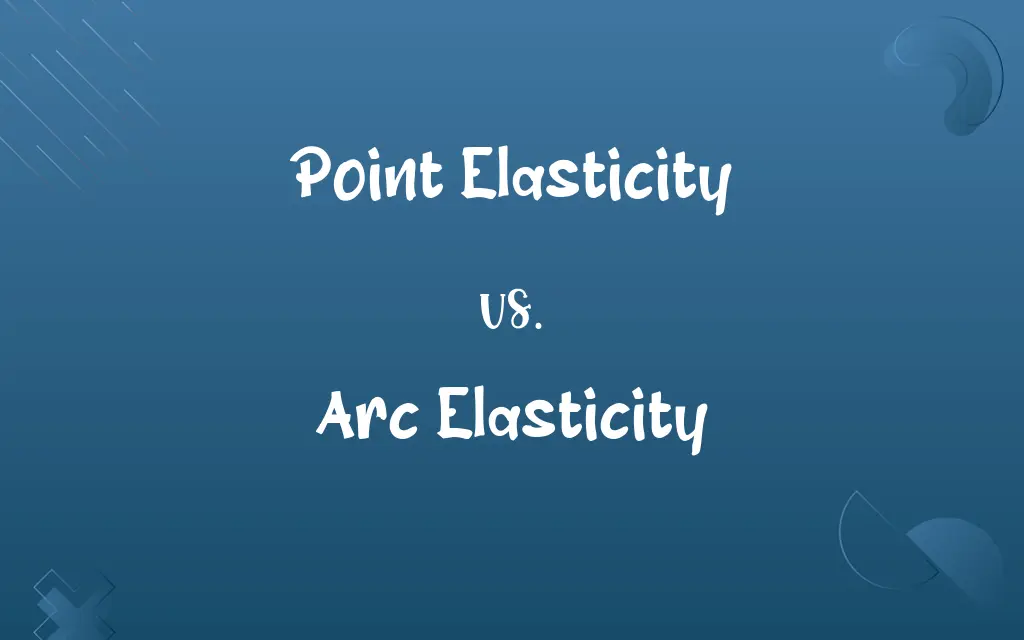
Key Differences
Point Elasticity focuses on the elasticity of demand or supply at a specific point on the curve, representing the immediate reaction to price changes. In contrast, Arc Elasticity covers a segment of the demand or supply curve, offering a broader view of responsiveness over a range of prices. Both concepts are fundamental in understanding market dynamics, yet they apply to different scenarios and scales of analysis.
Shumaila Saeed
Jan 23, 2024
When calculating Point Elasticity, the method uses differential calculus, making it precise for infinitesimally small changes in price. Arc Elasticity, however, employs a more general formula, suitable for larger price changes over a defined arc on the curve. Both methodologies are crucial for different economic analyses, with Point Elasticity giving a more immediate, microscopic view, and Arc Elasticity presenting a macroscopic perspective.
Shumaila Saeed
Jan 23, 2024
Point Elasticity is typically used for theoretical and precise calculations, often in scenarios with minute price fluctuations. On the other hand, Arc Elasticity is more practical for real-world situations where prices change significantly over a period. Both concepts, though different in their application, are integral in understanding how variables other than price affect demand and supply.
Shumaila Saeed
Jan 23, 2024
In the context of Point Elasticity, the sensitivity of demand or supply to price changes is considered constant at that point. Conversely, Arc Elasticity acknowledges the variability of this sensitivity over a range of prices. Both concepts underscore the dynamic nature of markets, with Point Elasticity providing a snapshot and Arc Elasticity offering a broader picture.
Shumaila Saeed
Jan 23, 2024
Point Elasticity is crucial for microeconomic analysis, allowing for detailed insights into consumer behavior at a specific price point. Arc Elasticity, in contrast, finds its utility in broader market analysis, helping to understand trends over a price range. Both are essential tools in economics, each illuminating different aspects of market behavior and price sensitivity.
Shumaila Saeed
Jan 23, 2024
ADVERTISEMENT
Comparison Chart
Scope of Analysis
At a specific point on the curve
Over a range of points on the curve
Shumaila Saeed
Jan 23, 2024
Application
For minute, immediate price changes
For significant price changes over time
Shumaila Saeed
Jan 23, 2024
Sensitivity Assumption
Sensitivity is constant at that point
Sensitivity varies over the price range
Shumaila Saeed
Jan 23, 2024
ADVERTISEMENT
Point Elasticity and Arc Elasticity Definitions
Point Elasticity
Point Elasticity measures immediate price responsiveness at a specific point.
The Point Elasticity at $5 showed a high sensitivity to price changes.
Shumaila Saeed
Jan 05, 2024
Arc Elasticity
Arc Elasticity measures price responsiveness over a range of values.
Arc Elasticity helped us understand the demand trend between $5 and $10.
Shumaila Saeed
Jan 05, 2024
Point Elasticity
Point Elasticity is used for theoretical insights into market behavior.
Point Elasticity analysis revealed theoretical limits of price increases.
Shumaila Saeed
Jan 05, 2024
Arc Elasticity
It's calculated using a formula suitable for larger price arcs.
The Arc Elasticity formula provided insights into the broader market response.
Shumaila Saeed
Jan 05, 2024
Point Elasticity
Point Elasticity is ideal for microeconomic analysis of demand.
Microeconomic models often use Point Elasticity for detailed demand projections.
Shumaila Saeed
Jan 05, 2024
ADVERTISEMENT
Arc Elasticity
Arc Elasticity is used for macroeconomic market trend analysis.
The market trend was clear when we applied Arc Elasticity across multiple price points.
Shumaila Saeed
Jan 05, 2024
Point Elasticity
It's a precise calculation of elasticity using differential calculus.
Using Point Elasticity, we determined the exact change in demand at the new price.
Shumaila Saeed
Jan 05, 2024
Arc Elasticity
Arc Elasticity is practical for analyzing real-world price changes.
Using Arc Elasticity, we analyzed the seasonal demand fluctuations.
Shumaila Saeed
Jan 05, 2024
Point Elasticity
It reflects the rate of response to price changes at a particular price.
At $10, the Point Elasticity indicated a low likelihood of demand fluctuation.
Shumaila Saeed
Jan 05, 2024
Arc Elasticity
It considers the variability of demand sensitivity across a price range.
Arc Elasticity showed varying consumer responses across different price levels.
Shumaila Saeed
Jan 05, 2024
Repeatedly Asked Queries
Is point elasticity a dynamic or static measure?
Point elasticity is a static measure, focusing on one specific point in the price-quantity relationship.
Shumaila Saeed
Jan 23, 2024
How is point elasticity calculated?
Point elasticity is calculated using the derivative of the curve at the desired point.
Shumaila Saeed
Jan 23, 2024
What does point elasticity indicate about demand or supply?
Point elasticity shows the responsiveness of quantity demanded or supplied to a price change at a single point.
Shumaila Saeed
Jan 23, 2024
Is arc elasticity affected by the direction of price or quantity changes?
No, arc elasticity is direction-neutral and considers both price increases and decreases in its calculation.
Shumaila Saeed
Jan 23, 2024
How do point and arc elasticity differ?
Point elasticity focuses on a specific point, while arc elasticity considers changes over an interval or range.
Shumaila Saeed
Jan 23, 2024
What is the formula for point elasticity?
Point elasticity is typically calculated as (dQ/dP) * (P/Q), where dQ is the change in quantity, dP is the change in price, P is the price, and Q is the quantity.
Shumaila Saeed
Jan 23, 2024
How is arc elasticity calculated?
Arc elasticity is calculated as the percentage change in quantity divided by the percentage change in price over the interval.
Shumaila Saeed
Jan 23, 2024
What is Point Elasticity?
It's a measure of how much demand or supply responds to a price change at a specific point.
Shumaila Saeed
Jan 23, 2024
What is arc elasticity?
Arc elasticity measures the price or quantity elasticity of demand or supply over a range or interval, rather than at a single point.
Shumaila Saeed
Jan 23, 2024
Why is arc elasticity used in economics?
Arc elasticity is used when there are significant price or quantity changes within a given range, providing a more accurate measure than point elasticity.
Shumaila Saeed
Jan 23, 2024
Do point and arc elasticities yield the same results in all cases?
No, point and arc elasticities may yield different results, especially when dealing with nonlinear demand or supply curves.
Shumaila Saeed
Jan 23, 2024
What is the formula for arc elasticity?
Arc elasticity is typically calculated as [(ΔQ / Q) / (ΔP / P)], where ΔQ is the change in quantity, Q is the average quantity, ΔP is the change in price, and P is the average price.
Shumaila Saeed
Jan 23, 2024
Are point and arc elasticities used only in microeconomics?
No, both measures are used in microeconomics and macroeconomics to analyze various economic factors.
Shumaila Saeed
Jan 23, 2024
When is arc elasticity more informative?
Arc elasticity is more informative when analyzing larger price or quantity changes over an interval to avoid distortion caused by extreme values.
Shumaila Saeed
Jan 23, 2024
Are point and arc elasticities static or dynamic concepts?
Both point and arc elasticities are static concepts that provide insights into economic relationships at specific points or intervals.
Shumaila Saeed
Jan 23, 2024
Which elasticity measure is more accurate?
Arc elasticity is often more accurate when significant price or quantity changes occur within a range.
Shumaila Saeed
Jan 23, 2024
Which measure is commonly used in economics?
Both point and arc elasticity measures are used in economics, depending on the specific analysis and data available.
Shumaila Saeed
Jan 23, 2024
When is point elasticity preferred over arc elasticity?
Point elasticity is preferred when analyzing minor price or quantity changes around a specific point.
Shumaila Saeed
Jan 23, 2024
Can you calculate point elasticity from arc elasticity data and vice versa?
Yes, it is possible to calculate one from the other, given appropriate data and assumptions.
Shumaila Saeed
Jan 23, 2024
What are some real-world applications of point and arc elasticities?
These measures are applied in pricing strategies, taxation policies, and understanding consumer behavior in markets.
Shumaila Saeed
Jan 23, 2024
Share this page
Link for your blog / website
HTML
Link to share via messenger
About Author
Written by
Shumaila SaeedShumaila Saeed, an expert content creator with 6 years of experience, specializes in distilling complex topics into easily digestible comparisons, shining a light on the nuances that both inform and educate readers with clarity and accuracy.













